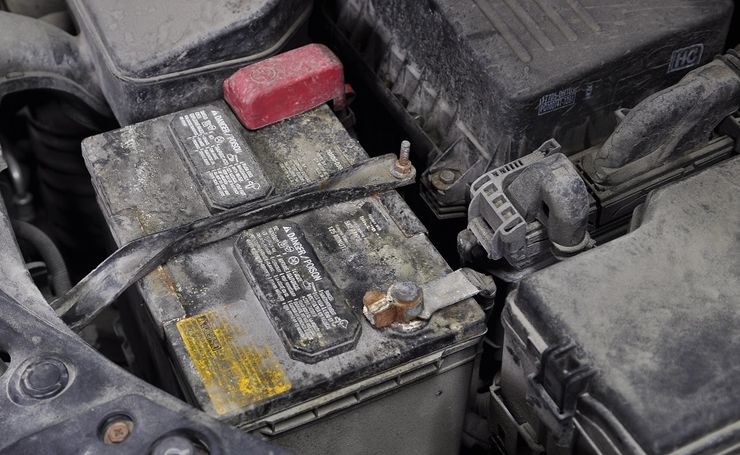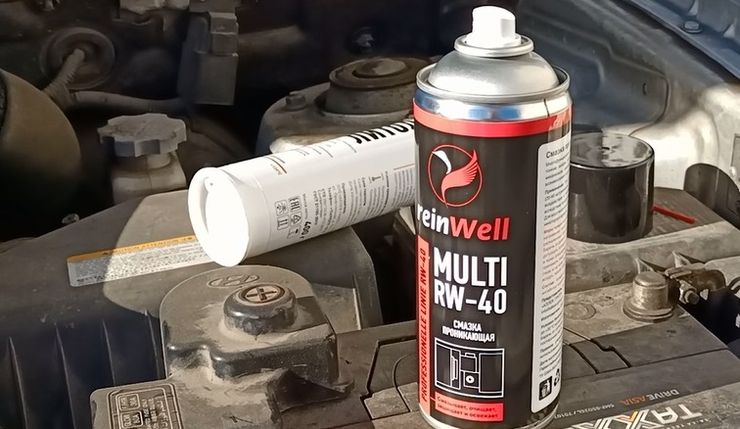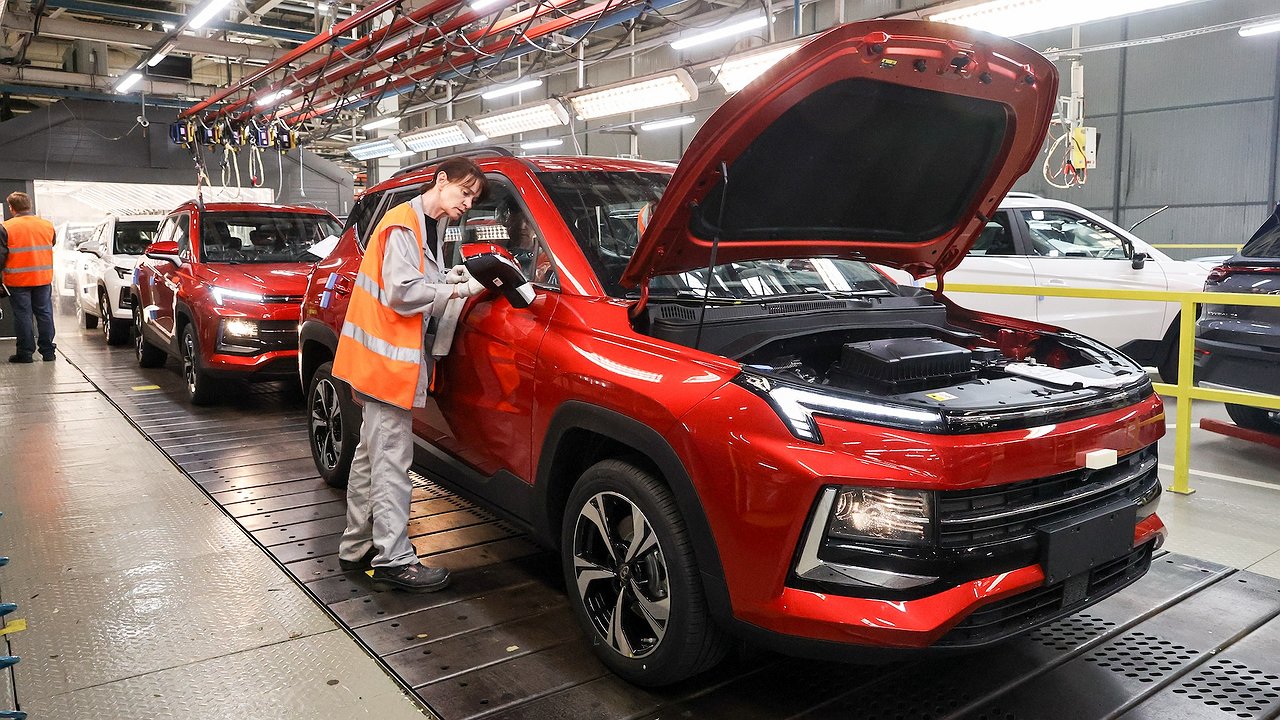Among the common problems faced by our car owners, a special place is occupied by such a problem as electrochemical corrosion of the contacts of the on-board electrical system. The portal “AvtoVzglyad” tells how to deal with it.
For those who are not particularly strong in electrical engineering, we remind you that the defects indicated above should be taken seriously. For example, if they appear on elements of power wires, they can cause serious malfunctions in the operation of all standard electrical equipment. The battery that suffers from this most often is usually the battery.
Even slight oxidation of the terminals or cable ends quickly reduces the reliability of the battery’s connection to the on-board electrical system. This disrupts the battery’s charging mode and therefore reduces its capacity. This leads to a logical result: at a certain point the power supply to the starter motor finally “sits down” and does not respond at all to turning the ignition key.
Another option for a negative development of events in the engine compartment may be associated with banal contamination of electrical contacts and wire connections. Their source is known to everyone. These are evaporations of technical fluids, including oils in the engine compartment, but also salt solutions that fly from under the wheels in winter.
Muddy street water also contributes; when it dries, it can form stubborn dirt deposits on wire connectors, greatly deteriorating the conductivity of contact connections. The result of these problems is usually the same: serious disruptions in the operation of the engine and electrical equipment.
As experts note, such defects in electrical wiring, including oxides, sulfide deposits and rust on the battery terminals, should be repaired immediately. The fact is that they lead to an increase in leakage currents and rapid discharge. Obviously, it is very difficult to remove such “dirty” spots with an ordinary brush; you need special car chemicals.
First of all, of course, we are talking about modern and effective preparations for quickly cleaning electrical wiring elements on board, including the power elements. The main thing is to do it on time. For such cleaning, you can choose one of the imported compounds, or more affordable household aerosols. By the way, among the autochemical products that we produce today there are drugs of decent quality that are in no way inferior to foreign ones in effectiveness.
For example, in the “battle” against sulfide deposits and rust that attack the battery terminals, the penetrating spray lubricant from the Multi RW−40 series performed very well. This universal product, produced under the ReinWell brand, quickly “soaks” rusted bolts and nuts, while lubricating them, greatly facilitating their disassembly.
In addition, the product effectively displaces moisture and neutralizes (thanks to corrosion inhibitors) small rust spots quite well. The drug therefore easily causes problems in the electrical wiring on board. The basis of the penetrating spray is a special synthetic oil. The recipe also includes a range of lubricating, anti-corrosive and protective additives. This allows the product to penetrate quickly and deeply into the gaps between the joints during spraying.
The high efficiency of Multi RW−40 has been repeatedly confirmed by user reviews. It is achieved both thanks to the formulation of the composition itself and thanks to a powerful aerosol jet. After spraying, the composition itself dries quickly and a durable protective film forms on the treated contact surfaces.
For those who are not particularly strong in electrical engineering, we remind you that the defects indicated above should be taken seriously. For example, if they appear on elements of power wires, they can cause serious malfunctions in the operation of all standard electrical equipment. The battery that suffers from this most often is usually the battery.
Even slight oxidation of the terminals or cable ends quickly reduces the reliability of the connection of the battery to the on-board network. This disrupts the battery’s charging mode and therefore reduces its capacity. This leads to a logical result: at a certain point the starter power supply finally “sits down” and does not respond at all to turning the ignition key.
Another option for a negative development of events in the engine compartment may be associated with banal contamination of electrical contacts and wire connections. Their source is known to everyone. These are evaporations of technical fluids, including oils in the engine compartment, but also salt solutions that fly from under the wheels in winter.
Muddy street water also contributes; when it dries, it can form stubborn dirt deposits on wire connectors, greatly deteriorating the conductivity of contact connections. The result of these problems is usually the same: serious disruptions in the operation of the engine and electrical equipment.
As experts note, such defects in electrical wiring, including oxides, sulfide deposits and rust on the battery terminals, should be repaired immediately. The fact is that they lead to an increase in leakage currents and rapid discharge. Obviously, it is very difficult to remove such “dirty” spots with an ordinary brush; you need special car chemicals.
First of all, of course, we are talking about modern and effective preparations for quickly cleaning electrical wiring elements on board, including the power elements. The main thing is to do it on time. For such cleaning, you can choose one of the imported compounds, or more affordable household aerosols. By the way, among the autochemical products that we produce today there are drugs of decent quality that are in no way inferior to foreign ones in effectiveness.
For example, in the “battle” against sulfide deposits and rust that attack the battery terminals, the penetrating spray lubricant from the Multi RW−40 series performed very well. This universal product, produced under the ReinWell brand, quickly “soaks” rusted bolts and nuts, while lubricating them, greatly facilitating their disassembly.
In addition, the product effectively displaces moisture and neutralizes (thanks to corrosion inhibitors) small rust spots quite well. The drug therefore easily causes problems in the electrical wiring on board. The basis of the penetrating spray is a special synthetic oil. The recipe also includes a range of lubricating, anti-corrosive and protective additives. This allows the product to penetrate quickly and deeply into the gaps between the joints during spraying.
The high efficiency of Multi RW−40 has been repeatedly confirmed by user reviews. It is achieved both thanks to the formulation of the composition itself and thanks to a powerful aerosol jet. After spraying, the composition itself dries quickly and a durable protective film forms on the treated contact surfaces.
Source: Avto Vzglyad
Donald Salinas is an experienced automobile journalist and writer for Div Bracket. He brings his readers the latest news and developments from the world of automobiles, offering a unique and knowledgeable perspective on the latest trends and innovations in the automotive industry.















